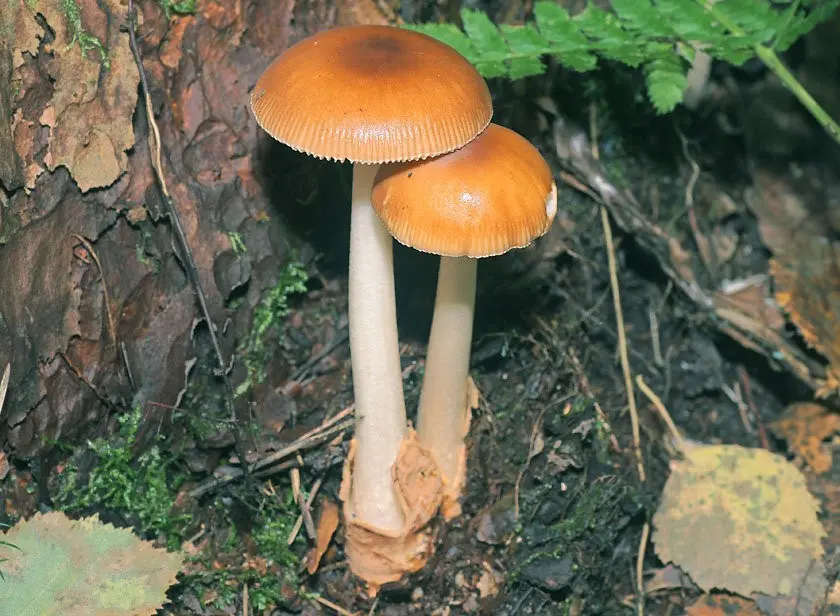Yellow-brown float (Amanita fulva)
- Division: Basidiomycota (Basidiomycetes)
- Subdivision: Agaricomycotina (Agaricomycetes)
- Class: Agaricomycetes (Agaricomycetes)
- Subclass: Agaricomycetidae (Agaricomycetes)
- Order: Agaricales (Agaric or Lamellar)
- Family: Amanitaceae (Amanitaceae)
- Genus: Amanita (Amanita)
- Subgenus: Amanitopsis (Float)
- Type: Amanita fulva (Float yellow-brown)

The fungus belongs to the genus of fly agaric, belongs to the large family of amanitaceae.
It grows everywhere: North America, Europe, Asia, and even in some regions of North Africa. Grows in small groups, single specimens are also common. Loves wetlands, acidic soils. Prefers conifers, rarely found in deciduous forests.
The height of the yellow-brown float is up to 12-14 cm. The hat in adult specimens is almost flat, in young mushrooms it is convex ovoid. It has a golden, orange, brown color, in the center there is a small dark spot. There are grooves on the edges, there may be a small amount of mucus on the entire surface of the cap. The cap is usually smooth, but some mushrooms may have remnants of a veil on its surface.
The pulp of the mushroom is odorless, soft and fleshy in texture.
The white-brown leg is covered with scales, brittle. The lower part is denser and thicker, the upper one is thin. Volvo on the stem of a fungus with a leathery structure, not attached to the stem. There is no ring on the stem (a specific feature of this mushroom and its main difference from poisonous fly agarics).
Amanita fulva grows from July to the end of October.
Belongs to the edible category (conditionally edible), but is used only in boiled form.









